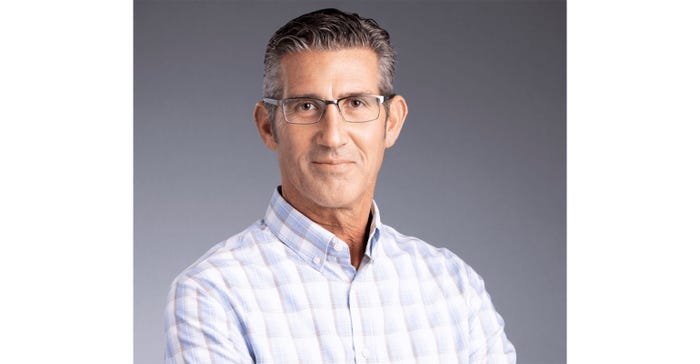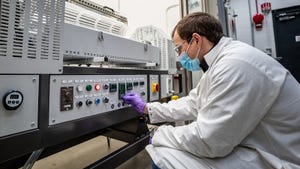Batteries & The Fight Against Forced Labor
Amid UFLPA scrutiny of batteries, importers must be able to prove chain of custody.
July 24, 2023

Eric Linxwiler, Senior Vice President, TradeBeyond
When America first passed the Uyghur Forced Labor Prevention Act (UFLPA), the law that bans the importation of goods from China’s Xinjiang region under the presumption they were produced with forced labor, lawmakers cited cotton, tomatoes, and polysilicon as imports of the highest concern. One year into the new law, however, it’s clear that US Customs and Border Protection’s enforcement scope has been far broader than initially expected, and that battery technology has been singled out for particular scrutiny under the UFLPA.
So far Customs has detained 1,999 electronics shipments under the law, and while the exact product breakdown of those shipments is unknown, the agency revealed that it made detainments in the automotive and aerospace industry for the first time during the second quarter of 2023. Batteries were almost certainly among the products targeted by those detainments, given the timing. In December, a bipartisan Senate committee announced an investigation into major automakers’ apparent ties to the Xinjiang region, a major supplier of batteries.
Lawmakers were responding in part to an alarming 2022 report by Sheffield Hallam University that shed light on just how pervasive forced labor is in the automotive supply chain and an updated report from the U.S. Department of Labor that detailed the role of child labor in mining cobalt, a key component of cathodes used to make nearly all lithium-ion batteries.
Enforcement scope not limited to China
One unmistakable takeaway from the first year of the UFLPA is its enforcement scope isn’t limited to shipments from China. In fact, of the electronics shipments Customs has seized so far, the vast majority came from Malaysia (1,280) and Vietnam (676), not China. Since the law applies to shipments from any country of origin, it’s not adequate for brands and retailers to merely demonstrate to Customs that their shipments came from outside China.
To comply with the UFLPA and prove that no forced labor was involved in the creation of imports, Customs’ guidelines stipulate that companies must be able to provide documentation detailing “the order, purchase, manufacture, and transportation of inputs throughout their supply chain.” That could include records of the payments for transportation of raw materials (including invoices, contracts, purchase orders and other proofs of payment); and transaction and supply chain records (including packing lists, bills of lading, and manifests).
The exact documentation required will vary on a case-by-case basis, but in short, businesses must now have full records of all their suppliers, from raw materials to finished goods, and they need to document and provide to authorities the full chain of custody of materials. That poses a challenge for brands and retailers since most lack the proper systems to document the full provenance of their products and centralize supplier information, especially beyond the first and second tiers.
Best practices for chain of custody
Businesses need to adopt a supply chain management platform that can provide the transparency they need to make the most responsible sourcing decisions and to map their supplier networks to the Nth tier to obtain the proper chain of custody documentation. That traceability is almost impossible without an advanced multi-enterprise platform, especially for brands and retailers with increasingly complex supply chains supporting vast supplier networks.
A multi-enterprise platform helps businesses collect and organize the chain of custody documentation they need to adhere to UFLPA guidelines. In response to demand from our customers, my company TradeBeyond recently introduced a comprehensive chain of custody management suite. The platform introduces a simple process for compiling this documentation during order creation and for determining whether an order has fulfilled the chain of custody obligations of the UFLPA and other new global due diligence laws. To mitigate risk, the system creates alerts flagging orders that have unmet chain of custody requirements.
The UFLPA’s new normal
This technology will increasingly become standard as businesses continue to adjust to the UFLPA’s new normal, especially as reports mount about long and extremely costly product detainment delays at ports under the law.
While managing orders properly can help avoid lengthy detainments, another key preventative measure electronics retailers can take is selecting carefully vetted supply chain partners in the first place. Here, too, multi-enterprise platforms prove to be invaluable. Supplier relationship management tools allow supply chain managers to vet and monitor vendor compliance, enforce their company’s ESG expectations, and easily and quickly onboard responsible suppliers based on their location and accreditation. This allows companies to strategically cut high-risk vendors and regions out of their supply chain, which is precisely what lawmakers set out to accomplish with the UFLPA.
A multi-enterprise platform grants electronics retailers more efficient operations and a full understanding of their social and environmental footprint. In addition to facilitating visibility, it exposes vulnerabilities that businesses can quickly act to correct. This due diligence is no longer just a best practice; it’s key to staying ahead of tightening ESG regulations like the UFLPA.
Eric Linxwiler is Senior Vice President of TradeBeyond. He has over 30 years of experience in enterprise software and cloud-based platform companies with a specialty in supply chain optimization and workflow management.

You May Also Like



